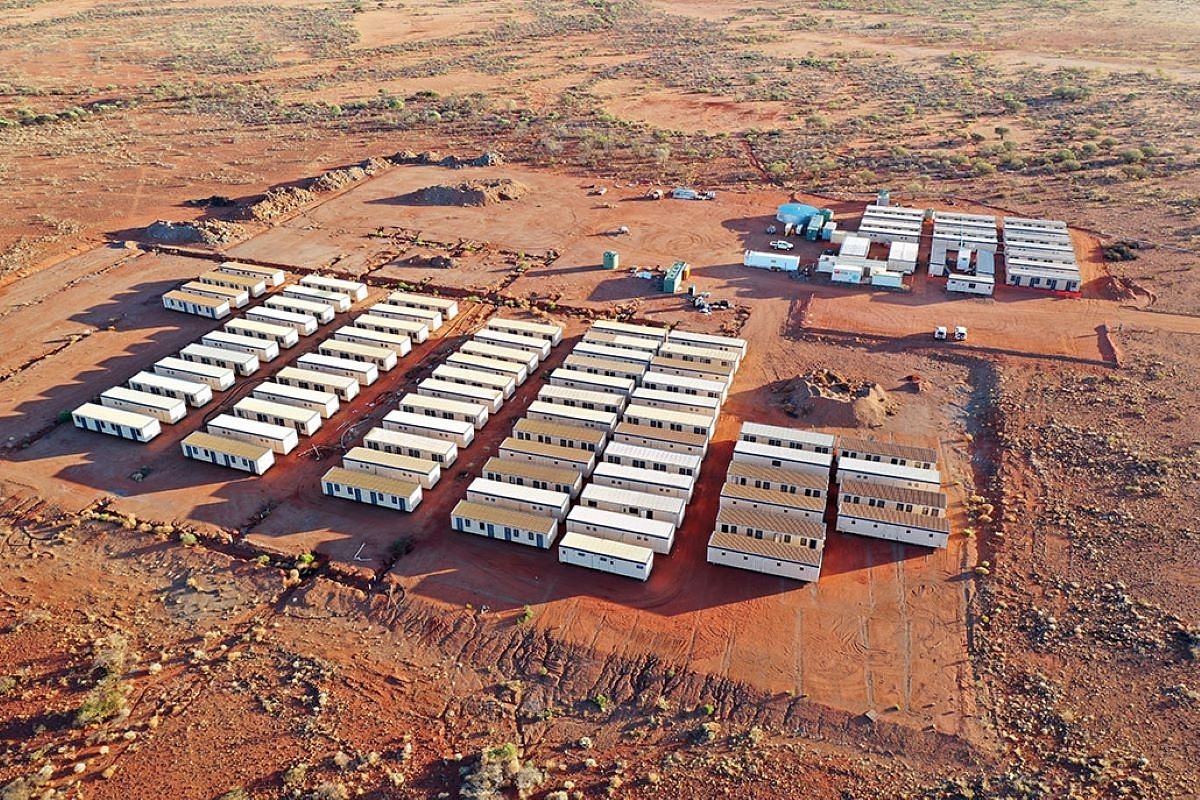News Brief
Australia Backs A Leading Local Mining Firm As It Seek To Challenge Chinese Dominance Of Rare Earths Mining
- Seeking to challenge Chinese's dominance of the rare earths mining sector, Australian government is putting financial muscle behind a leading local mining company with an aim to bolster the production of critical minerals that are used in magnets for smartphones, electric vehicles, and wind turbines.
- Hastings Technology Metals has secured a $99.28m (A$140m) loan by the Australian government for the construction of the Yangibana rare earths project in Western Australia (WA).
- The Yangibana Project is rich in two sough after rare earth elements neodymium (Nd) and praseodymium (Pr), collectively referred to as NdPr, which are becoming essential for the manufacture of permanent magnet motors that are critical components of electric vehicles (EVs), wind turbines and other technologies leading the decarbonisation revolution.

Yangibana rare earths project
Seeking to challenge Chinese's dominance of the rare earths mining sector, Australian government is putting financial muscle behind a leading local mining company with an aim to bolster the production of critical minerals that are used in magnets for smartphones, electric vehicles, and wind turbines.
Hastings Technology Metals has secured a $99.28m (A$140m) loan by the Australian government for the construction of the Yangibana rare earths project in Western Australia (WA).
The mining firm received a 12.5 year loan from the the government’s Northern Australia Infrastructure Facility (NAIF).
The NAIF loan forms part of the total debt funding of $212.7m-$283.6m (A$300m-400m) that the company is seeking to raise for the Yangibana project, which has become the first rare earths project in Australia to secure the NAIF loan.
The Yangibana Project is rich in two sough after rare earth elements neodymium (Nd) and praseodymium (Pr), collectively referred to as NdPr, which are becoming essential for the manufacture of permanent magnet motors that are critical components of electric vehicles (EVs), wind turbines and other technologies leading the decarbonisation revolution.
The Yangibana Project is situated in the remote outback of Australia, on Thiin-Mah Warriyangka Tharrkari Jiwarli (TMWTJ) country, approximately 270km North East of Carnarvon, Western Australia. The project will produce mixed rare earths carbonate (MREC), which is expected to meet around 6%-8% of the global demand for critical minerals, namely neodymium and praseodymium. Yangibana has the highest composition of neodymium and praseodymium in the world.
Australia has significant reserves of critical minerals that are essential to manufacturing advanced technologies such as electric vehicles, mobile phones and renewable energy systems.
Australian geopolitical experts fear that China could attempt to prevent Australian mining firms from competing internationally. They view the need to build sufficient level of self-reliance in rare earth mining sector as national security imperative,
The Australian government has identified rare earths as a strategic industry and will be helping mining companies in the sector by funding them to compete globally.
What Are Rare Earth Elements
Rare earth elements is composed of 17 minerals critical to the defense industry’s manufacturing of missiles and munitions, hypersonic weapons, wind turbines, robotics, electric carsand radiation-hardened electronics — as well as consumer electronics like cellphones.
Rare earth elements include ytterbium (used in TVs, computer screens and cancer drugs), praseodymium (used in magnets and to strengthen metal for aircraft engines), lanthanum (used primarily in battery alloys and catalysts;) and cerium (used in catalysts, glass, ceramics, polishing. Praseodymium, neodymium, samarium, and dysprosium are also used to make high-quality permanent magnets.
Australia's Ambitions In Rare Earth Sector
Besides aiming to reduce dependency through mining and some value-add processing for export, Australia is planning to domestically manufacture rare-earth magnets and other high-technology and high-value products. Reliable domestic supply will drive further high-value industries, such as electronics and defence applications.
Chinese Domination Of Rare Earth Mining Sector
Rare earth prices reached a 10-year high in November 2021, driven by the demand from emerging industries, tight supplies and industry consolidation.
Till recently, China controlled nearly 90% of the world’s rare earth elements mining and refinement as well as supply chains dependent on them. However its share of global output has fallen from 86 per cent in 2014 to 58.3 per cent last year, according to the US Geological Survey.
China's state asset administration recently approved the merger of three leading rare earths companies, to create a new state-owned behemoth aimed at sustaining the country's dominance of a key strategic sector.
Beijing as so far resisted calls to weaponise its control of rare earth minerals supply chain as retaliatory measure against US trade war that imposed heavy tariffs on most Chinese products in 2018.
Also Read: China Merges 3 State-owned Rare Earths Firms To Form A New Mining Behemoth As It Fights To Sustain Supremacy In 17 Strategic Minerals
Introducing ElectionsHQ + 50 Ground Reports Project
The 2024 elections might seem easy to guess, but there are some important questions that shouldn't be missed.
Do freebies still sway voters? Do people prioritise infrastructure when voting? How will Punjab vote?
The answers to these questions provide great insights into where we, as a country, are headed in the years to come.
Swarajya is starting a project with an aim to do 50 solid ground stories and a smart commentary service on WhatsApp, a one-of-a-kind. We'd love your support during this election season.
Click below to contribute.
Latest